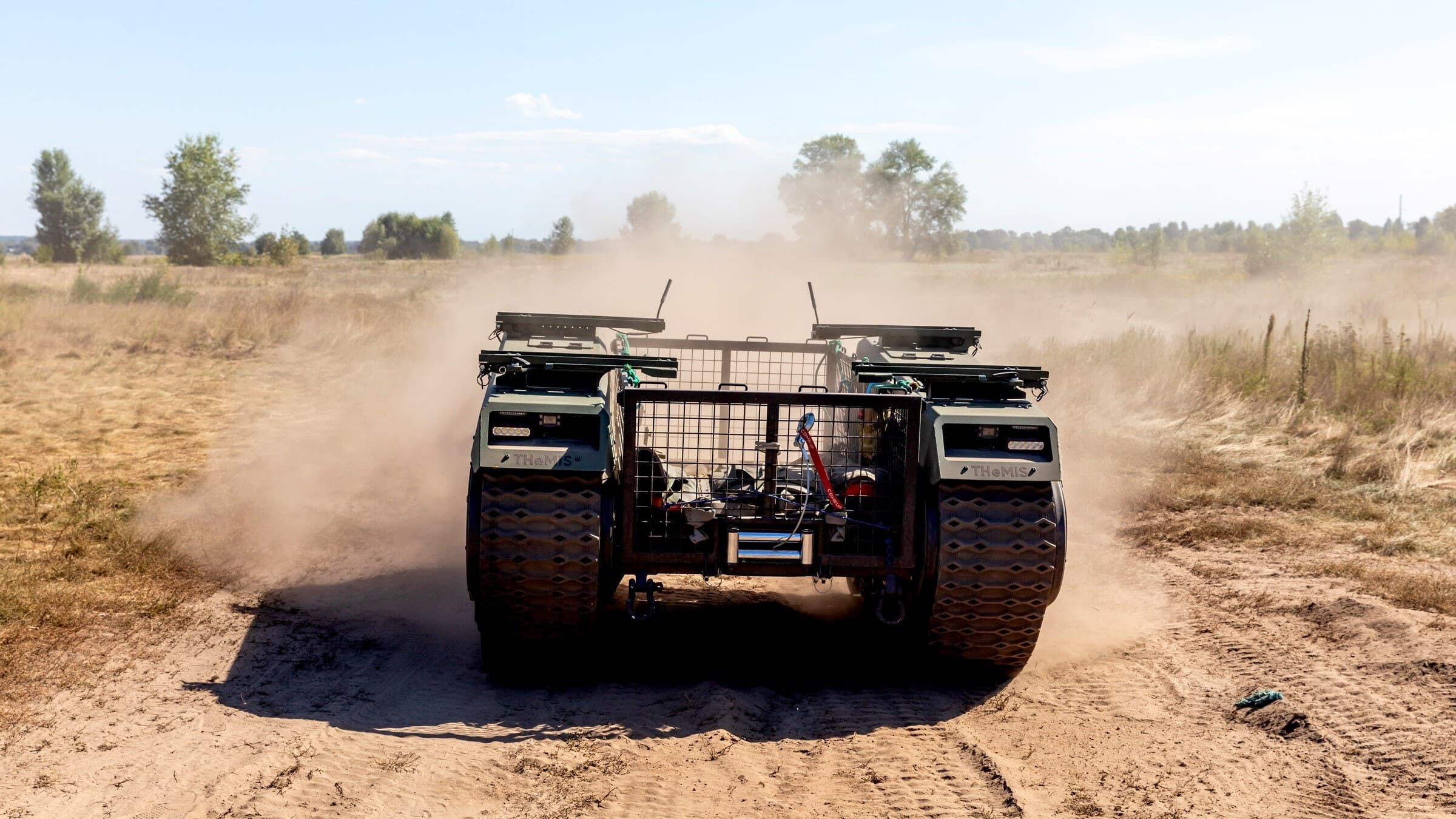
1,000 days of Russia-Ukraine conflict: How robots are changing battleground
What's the story
Tuesday was the 1,000th day since Russia launched a full-scale invasion of Ukraine in February 2022.
The war has left thousands of Ukrainians dead and over six million citizens as refugees abroad. The population has shrunk by a quarter since the invasion ordered by Kremlin leader Vladimir Putin.
Now, as the war continues to rage on, both countries are increasingly relying on technology to replace human soldiers on the battlefield.
Tech warfare
Drone technology reshapes battlefield strategies
The demand for drone signal jammers has skyrocketed, with companies such as Unwave manufacturing 2,500 units per month and having a six-week waiting list.
This change came after a failed Ukrainian counteroffensive in the summer of 2023, stymied by Russia's heavy use of unmanned aerial vehicles (UAVs) and landmines.
Unwave co-founder Yuriy Shelmuk said, "concentrated, cheap aerial drones stopped all our assaults," emphasizing drones' role in modern warfare.
Rapid expansion
Ukraine's defense sector innovates amid conflict
Since the invasion, Ukraine's defense manufacturing sector has grown exponentially, with more than 800 companies now active.
These companies are dedicated to manufacturing drones, anti-drone technology, and artificial intelligence (AI) systems to keep pace with changing battlefield dynamics.
"The Ukrainian military-industrial sector is the fastest innovating sector in the entire world right now," Ukrainian lawmaker Halyna Yanchenko said.
Drone dominance
Drones dominate production in Russia and Ukraine
Both Ukraine and Russia are likely to manufacture some 1.5 million drones this year. These small "first-person view" vehicles are remotely controlled and cost a mere few hundred dollars each.
Russian drones have made it difficult for Ukrainian forces to move freely and build fortifications.
By the summer of 2024, Russia was annexing Ukrainian territory at an unprecedented rate since early in the conflict.
Rise of automation
Automation takes center stage in Russia-Ukraine conflict
As casualties mount and fatigue kicks in, automation is emerging as a key focus for both sides.
Ukraine's 67th mechanized brigade's Ostap Flyunt said "The number of infantrymen deployed in trenches has decreased significantly," with combat command being increasingly conducted remotely to minimize personnel risk.
Ukraine now has over 160 companies manufacturing unmanned ground vehicles for different purposes, such as transporting supplies and evacuating wounded soldiers.
Future focus
Ukraine invests in remote warfare and AI
A unique example is an army colonel named Hephaestus left the military to create automated machine gun systems enabling operators to control weapons from a safe distance.
Arms minister Herman Smetanin stressed remote warfare and AI will be key to future developments: "In the near future, this will be the main direction of development, the war of robots."
Despite spending $1.5 billion modernizing its defense industry, Ukraine depends on Western partners for air defenses, etc.
Industry hurdles
Challenges faced by Ukraine's defense manufacturers
President Volodymyr Zelenskyy hopes to quell manufacturers' fears over profit margin limits and the absence of long-term state contracts.
Many companies struggle to hire skilled workers, or they are looking to move operations abroad as wartime arms export bans limit growth potential.
Kateryna Mykhalko, director of Tech Force in UA, an association of private defense manufacturers, disclosed that 85% of 38 firms surveyed by her were either considering moving operations overseas or had already done so.